Utter the term “psychic” to some people and you are likely to get scoffed at. But talk about “remote viewing” to the same people (once they learn what it is) and you’ll likely get and enthusiastic and interested response. Remote viewing has only recently begun to become known as a phenomenon with relatively broad recognition. Here we take a closer look at the practice of remote viewing to understand the distinctions between remote viewers and psychic practitioners.
What is Remote Viewing?
According to the International Remote Viewing Association (IRVA), remote viewing “is a novel perceptual discipline for gaining information not available to the ordinary physical senses.” In that sense, it is more than just being able to collect information about faraway locations.
The first question one might ask is: what is the difference between remote viewing and clairvoyance or other psychic (psi) abilities? IRVA says, “…it is obvious that remote viewing is related to so-called psi (also known as “psychic” or “parapsychological”) phenomena such as clairvoyance or telepathy. Whatever it is that seems to make it possible for human beings to do remote viewing is probably the same underlying ability that makes such things as clairvoyance work.”
The differences are:
- Most remote viewing occurs under controlled conditions in a lab.
- It is not done for the purposes of giving readings or “fortune-telling.”
- Is based in scientific methodology.
- Is often conducted with a monitor (a sort of guide) with strict scripted formats for experimental purposes and scientific protocols.
The History of Remote Viewing
Remote viewing has its roots in the American Society for Psychical Research in the 1960’s and early 70’s where out-of-body experiments were being conducted. Some of the early participants were Ingo Swann and Dr. Hal Puthoff (a physicist at the Stanford Research Institute think tank), both now famous in the world of remote viewing. The work quickly gained the attention and subsequent funding of the Central Intelligence Agency and later the Defense Intelligence Agency and other military organizations. By 1978 remote viewing was being experimented with for applications in intelligence gathering against military adversaries. In 1991the program was renamed “Star Gate.”
Meanwhile, civilian groups had been doing their own remote viewing experiments, and by 1995 the CIA had released a controversial report claiming that remote viewing was ineffectual as an intelligence gathering tool. Portions of the program were declassified and eventually the program was shut down. In the years since, many of the program’s participants have gone public with books and other media divulging remote viewing techniques.
Among its intelligence and espionage functions, remote viewing has been used in operations to locate Gaddafi in Libya (so the US could bomb him) and to locate a missing plane in Africa.
Remote Viewing into the Future
The Farsight Institute is a research organization that seeks to transcend the scientific paradigm that “consciousness is a phenomenon strictly related to brain physiology,” holding instead that consciousness exists throughout creation. In this view, the human body is simply a tuning device that “that connects us to an underlying field of nature through which knowledge of all things is possible.”
One of the most difficult tasks to accomplish with remote viewing, Farsight notes, is to accurately predict the future. Certain types of experiments have a high rate of failure, while others succeed. The likely explanation for this is that the future doesn’t exist in one linear probability, but as multiple possibilities; i.e. multiple universes. Theoretical frameworks such as quantum mechanics have long proposed the existence of multiple timelines and realities. Farsight continues to conduct experiments based on this framework.
Is Remote Viewing Real?
Remote viewing is, then, the institutionalization of psi phenomenon. Framed as a scientific methodology, the element of remote viewing that is “related to so-called psi phenomenon” is given credibility as a “mind technology” worthy of study apart from its “spiritual” qualities.
The post What Is Remote Viewing and How Does It Work? appeared first on Psychic-Ratings.com.
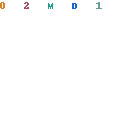 Telepathy is one of the most well known, researched and coveted psychic abilities around. We’ve all watched superhero movies where one of the protagonists can read minds and often wished that we could do the same. But what do we really know about the very real gift of telepathy outside of the glamorised movie portrayal? Well, in its most basic form, telepathy is simply the ability to read a person’s thoughts, or to communicate with another individual without using sound, body language or visual cues. On the face of it, being able to read the minds of the people around you is a very attractive prospect indeed.
Telepathy is one of the most well known, researched and coveted psychic abilities around. We’ve all watched superhero movies where one of the protagonists can read minds and often wished that we could do the same. But what do we really know about the very real gift of telepathy outside of the glamorised movie portrayal? Well, in its most basic form, telepathy is simply the ability to read a person’s thoughts, or to communicate with another individual without using sound, body language or visual cues. On the face of it, being able to read the minds of the people around you is a very attractive prospect indeed.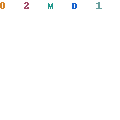 The idea that we as humans live multiple lifetimes is rooted in many religions of the East, especially Buddhism, Hinduism, Jainism and Sikhism as well as many other non-Eastern philosophical systems. Reincarnation is considered a fact of life within these belief systems, while in the Abrahamic religions (Judaism, Christianity and Islam) it is viewed as non-existent.
The idea that we as humans live multiple lifetimes is rooted in many religions of the East, especially Buddhism, Hinduism, Jainism and Sikhism as well as many other non-Eastern philosophical systems. Reincarnation is considered a fact of life within these belief systems, while in the Abrahamic religions (Judaism, Christianity and Islam) it is viewed as non-existent.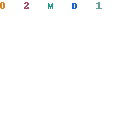 We all know that Friday the 13th is an unlucky day, and that knocking on wood stops bad things from happening, but have you ever wondered what the origin of those superstitions are? Superstitions are embedded in our behavioral patterns and not many people even question how they came to be. Of course, there are a lot of interesting stories about origins of popular superstitions, and it comes as no surprise they all hail from times long gone.
We all know that Friday the 13th is an unlucky day, and that knocking on wood stops bad things from happening, but have you ever wondered what the origin of those superstitions are? Superstitions are embedded in our behavioral patterns and not many people even question how they came to be. Of course, there are a lot of interesting stories about origins of popular superstitions, and it comes as no surprise they all hail from times long gone.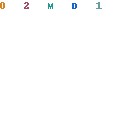 Psychic readings are a part of the world ever since we as a species noticed that not everything is easily explainable. The mysterious life energy is felt by everyone no matter where they live on the planet. Psychics are people with extraordinary abilities to feel and read into a spiritual energy and draw conclusions from it. Celebrities, world leaders and sport stars are known to be especially fond of psychic readings. Some visit psychics personally, while some use phone apps and similar interactive devices to get their readings.
Psychic readings are a part of the world ever since we as a species noticed that not everything is easily explainable. The mysterious life energy is felt by everyone no matter where they live on the planet. Psychics are people with extraordinary abilities to feel and read into a spiritual energy and draw conclusions from it. Celebrities, world leaders and sport stars are known to be especially fond of psychic readings. Some visit psychics personally, while some use phone apps and similar interactive devices to get their readings.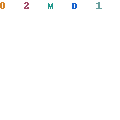 Palmistry is a science and an art of reading signs from the lines located on palms of a hand. It was created in ancient India and quickly spread to Egypt, and then Europe. Palmistry was met with both admiration and skepticism ever since it came to life. It was studied by numerous ancient minds along with astrology, and has been developed throughout the history of the world.
Palmistry is a science and an art of reading signs from the lines located on palms of a hand. It was created in ancient India and quickly spread to Egypt, and then Europe. Palmistry was met with both admiration and skepticism ever since it came to life. It was studied by numerous ancient minds along with astrology, and has been developed throughout the history of the world.